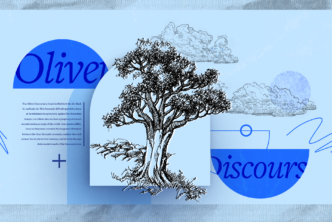The following post, authored by Tavis Bohlinger, was originally posted on the Logos Academic blog.
If you don’t know who Jacob Neusner is, it’s time to bone up. Apart from his exceptional prolific publishing output (and that’s an understatement; see point one below), he was known both for his highly acerbic nature to some and his deeply affectionate loyalty to others. He was also, as my final point suggests, the consummate scholar, but not in the way you’d expect.
Neusner was one of those incredibly brilliant individuals who always seem destined to create havoc through their combination of ingenuity, intellect, and industriousness. Neusner possessed all three. He related how he was never intellectually challenged in his youth until he encountered the Talmud in October 1954. Although raised Jewish, he began learning Hebrew much later than his Jewish peers. Still, he ended up resetting the paradigm for the study of Judaism, from its earlier apologetic form to rigorous critical inquiry through the use of academic methods.
Neusner studied at the Jewish Theological Seminary, Harvard, and Columbia. He was president of AAR, received 10 honorary degrees, was a member of the Institute for Advanced Study at Princeton, and taught for a few decades at Bard College, where a chair was named in his honor.
Here then are four reasons why you must read Jacob Neusner.
1. Jacob Neusner is the most published author ever.
The writing output of Jacob Neusner is almost incomprehensible. In his lifetime, he published nearly 1,000 books, which does not include his translations of rabbinic material. And his books weren’t just self-published tracts. Most of his works were published by Tier-1 academic publishers, including Brill, Sheffield, and Yale University Press.
Neusner’s interests over his career changed as well. They range from robust scholarly works on ancient Judaism and the Talmud, to work on the Holocaust and American Judaism, as well as efforts at inter-faith dialogue (he was Pope Benedict’s “favorite Rabbi”). It has been said that his earlier work in the texts of Rabbinic Judaism led naturally into attempting to answer the deeper existential questions posed by the Holocaust and contemporary religious dialogue. It is said that after reading deeply into the Holocaust in his university years, the driving question of his career became, “What do we do now?”
2. Jacob Neusner created Jewish studies as we know it today.
Before Neusner emerged on the scene, religion and theology were studied in the academy from almost entirely the Christian tradition. Study of Jewish material, in particular, rabbinic texts, was limited to the yeshivahs, or Jewish rabbinic training schools. Neusner breached the wall of the academy with an overarching methodology that is consistent throughout his writings and functions in a threefold manner:
There is no such thing as a monolithic Judaism
Rather, Judaism was a variegated, highly diverse phenomenon. He argued that “each document of the rabbinic canon has a discrete focus and agenda.” This was Neusner’s strong critique of E. P. Sanders’ Paul and Palestinian Judaism, which effectively dismantled that work a year after its publication (you can access that review here). This perspective led naturally to his second distinctive regarding hermeneutics of Jewish texts.
The Talmud does not interpret the Talmud
Much like some traditions in Christianity, Jewish study of the rabbinics prior to Neusner adhered to a type of Analogy of Scripture and Analogy of Faith. Neusner rejected that principle, arguing vehemently that each text in the corpus of rabbinic writings should be treated on its own merit (pun not intended), and analyzed for its historical background, audience, textual evidence, etc. There is no room for an Analogy of Scripture or Analogy of Faith in a truly critical study of Rabbinic Judaism. He translated the Mishnah, two Talmuds, and collections of Midrash, tying each text to its particular place, authors, times, editors, and more. For him, the texts did not represent real people in the past, as though the Talmud was a factual historical accounting of the deeds of past men. These texts, rather, represent a history of ideas.
Academic methods must be applied to Jewish texts
Jewish rabbinic writings were held as sacrosanct prior to Neusner’s often acerbic attacks on the soft methods of his forebears in Jewish studies. Judaism, in his view, was not untouchable or better than any other religious system, but rather, it was “interesting.” This was the mark of his scholarly integrity. He was willing to ask the questions of the texts that nobody else would, and he had the conviction of character to publish what were highly unpopular conclusions at the time.
Neusner published Jewish texts previously taken at face value in the same spotlight of critical analysis that had for generations been lighting the Bible. In other words, a hermeneutic of suspicion was now introduced into the study of Talmud, a text that until this point had been the reserve of Jewish seminaries. Jewish Studies had now entered the conclave of the humanities, and it would never be the same. According to his biographer, Aaron Hughes, Neusner “pretty much single-handedly created the field of Jewish studies” in the United States. He brought critical studies of Jewish texts and ancient Judaism into the mainstream, where it has remained and continued to flourish until today.
3. Jacob Neusner is the perfect example of a balanced academic.
Considering his publishing output, you could be forgiven for imagining the man hunched over his typewriter for years on end, eating at his desk and ordering delivery, never teaching but always researching, and ultimately losing his family and friends to a completely narcissistic devotion to scholarship.
That image is completely wrong.
Neusner explained his writing process in various interviews. He once said, “I write incessantly. I can work on a preface for 10 days.” His closest friends attributed his massive output to his strong sense of “intellectual discipline.” Mornings were spent writing with a singular focus. If the writing was difficult, we would finish at lunchtime. If the writing was going well, he would work on into the afternoon.
He had a keen sense of balance in his approach to life. For example, every day Jacob would go for a swim, taking time to get away from the desk and refresh his mind and body through exercise. His wife related once how Neusner claimed that all of his writing was done in the pool he would simply write down what had been passing through his mind while swimming.
4. Neusner was a difficult colleague, but a loyal friend and a devoted husband and father.
Neusner could be extremely forthright in his criticism of other scholars (he wrote an entire 193-page book refuting his doctoral supervisor’s view of Judaism). He was also notoriously difficult to work with if you happened to be in the same academic department as him. He taught at some of the most prestigious institutions in the world, including Dartmouth, Brandeis, and Brown, and then spending his last 20 years of teaching at Bard College. There are stories of him writing letters to colleagues with the following words at the end: “Drop dead” (but as every good biblical scholar knows, context is everything!).
Despite this, he was a man who cherished family and friends. They knew him as a great lover of all people of all walks of life, who held strong convictions nonetheless. Neusner especially loved dogs, and for 35 years always had at least one dog in the house to keep him and his children company.
Neusner’s Jewish Studies bundle
Neusner’s Jewish Studies bundle is a great opportunity to read the man who has been called the “most important Jewish thinker this country has produced.”
Here’s a list of what is included in the set:
- The Rabbinic Traditions about the Pharisees Before 70 AD (3 vols.)
- A History of the Mishnaic Law of Appointed Times (5 vols.)
- A History of the Mishnaic Law of Damages (5 vols.)
- A History of the Mishnaic Law of Holy Things (6 vols.)
- A History of the Mishnaic Law of Women (5 vols.)
- A History of the Mishnaic Law of Purities (22 vols.)
- Jacob Neusner Works on Judaic Hermeneutics (7 vols.)
- Jacob Neusner Select Works on Judaism (7 vols.)
- Jacob Neusner Select Works on Jewish-Christian Relations (4 vols.)
- Jacob Neusner Select Works on Rabbinic Judaism (10 vols.)
- Jacob Neusner Select Works on Historical Judaism (12 vols.)
- A History of the Jews in Babylonia (5 vols.)
- Christianity, Judaism, and Other Greco-Roman Cults (4 vols.)
- Evil and Suffering
- How To Grade Your Professors: And Other Unexpected Advice
- New Humanities and Academic Disciplines: The Case of Jewish Studies
- Women and Families
That’s a lot of reading, but still just a fraction of Neusner’s massive output of nearly 1,000 volumes. And yet these hand-selected resources are a treasure-trove of knowledge, the fruit of one of the most brilliant and productive minds in human history.
Sources:
http://www.tabletmag.com/jewish-arts-and-culture/books/211209/take-jacob-neusner-seriously
https://forward.com/opinion/351910/how-jacob-neusner-made-jewish-studies-mainstream/
http://www.nytimes.com/2005/04/13/books/scholar-of-judaism-professional-provocateur.html
http://www.catholicherald.co.uk/news/2016/10/11/jacob-neusner-benedict-xvis-favourite-rabbi-dies-aged-84/






